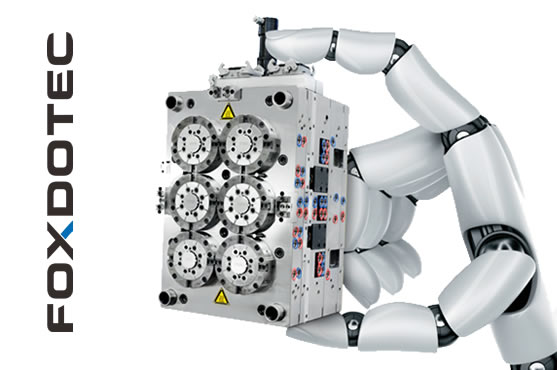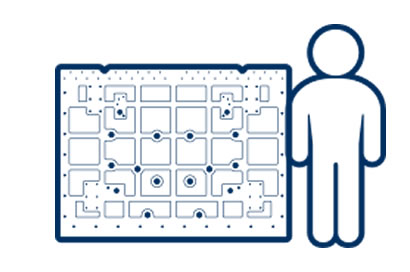Cooling Process System
Step into the future of molding efficiency with our Cooling Process System! Designed for optimal temperature control and energy efficiency, our system ensures faster cycles and superior product quality. Say goodbye to prolonged cooling times and hello to streamlined production. Elevate your molding process with our advanced Cooling Process System today
Cooling Process in Injection Molding
What is Cooling Process in Injection Molding?
In the injection molding process, cooling is a crucial stage that follows the injection of molten material into the mold cavity. Here's an overview of the cooling process:
- Molten Material Injection: After the mold cavity is filled with molten material under high pressure, the cooling process begins.
- Heat Transfer: Heat from the molten material dissipates into the walls of the mold, causing the material to gradually cool and solidify.
- Cooling Time: The cooling time varies depending on factors such as the material used, part geometry, and mold design. It is crucial to ensure that the material solidifies completely before the mold opens.
- Uniform Cooling: Proper cooling ensures uniform temperature distribution throughout the molded part, preventing warping, distortion, or internal stresses.
- Cycle Optimization: Optimizing the cooling process can reduce cycle times, improve production efficiency, and enhance overall part quality.
- Cooling Systems: Injection molds often incorporate cooling channels or circuits to facilitate efficient heat transfer and uniform cooling. These channels may contain cooling water or other cooling fluids.
- Control and Monitoring: Advanced injection molding machines feature control systems to regulate cooling parameters such as temperature, flow rate, and cycle time. Monitoring systems may also be used to ensure consistent cooling performance.
Effective cooling is essential for achieving high-quality injection-molded parts with precise dimensions, minimal defects, and optimal mechanical properties.
Precision Injection Mold


What is the technical features of cooling process?
Technical Features of Cooling Step
The cooling process in injection molding is characterized by several key technical features that contribute to the efficiency and quality of the production process:
- Heat Dissipation: Efficient heat dissipation from the molten material into the mold walls is essential for rapid cooling and solidification of the part.
- Uniform Cooling: Uniform cooling across the entire part geometry helps prevent warping, shrinkage, and internal stresses, ensuring dimensional accuracy and part quality.
- Cooling Time Optimization: Optimizing the cooling time based on material properties, part design, and mold configuration can reduce cycle times and increase production efficiency.
- Cooling Channel Design: The design and placement of cooling channels within the mold play a crucial role in controlling temperature distribution and facilitating efficient heat transfer.
- Cooling Medium: Cooling channels may circulate water or other cooling fluids to absorb heat from the mold and maintain optimal operating temperatures.
- Cooling Control Systems: Injection molding machines often feature control systems to regulate cooling parameters such as temperature, flow rate, and cycle time, ensuring consistent cooling performance.
- Monitoring and Feedback: Monitoring systems may be used to monitor cooling performance in real-time, providing feedback to optimize process parameters and ensure part quality.
- Integration with Overall Cycle: The cooling process is integrated into the overall injection molding cycle, with precise timing and coordination to achieve optimal part production.
By leveraging these technical features, the cooling process in injection molding contributes to the production of high-quality parts with tight tolerances, minimal defects, and excellent mechanical properties.

CNC Machining
CNC machining is a computer-controlled manufacturing process that utilizes pre-programmed software to dictate the movement of machinery and tools. This technology enables the precise cutting, drilling, and shaping of materials such as metal, plastic, and wood to create intricate components with high accuracy and consistency.
Read More
Precision Grinding
Precision grinding is a manufacturing process that involves the removal of material using abrasives to achieve extremely tight tolerances and surface finishes. used to produce components with intricate shapes, precise dimensions, and smooth surfaces. Precision grinding techniques include cylindrical grinding, surface grinding, and internal grinding.
Read More
Electrical Discharge Machining
Electrical Discharge Machining (EDM) is a non-traditional machining process that utilizes electrical discharges to erode material from a workpiece. It is particularly useful for machining complex shapes and hardened materials that are difficult to machine with conventional methods. EDM can achieve high precision and surface quality.
Read MorePrecision machining and manufacturing involve the use of advanced techniques and equipment to produce highly accurate and intricate components with tight tolerances. It requires expertise in machining processes, material properties, and quality control methods to ensure the production of high-quality parts for various industries.
Key Aspects of Understanding Injection Molds
- Design Principles: Understand the principles of injection mold design, including considerations for part geometry, material flow, cooling, and ejection.
- Materials and Construction: Explore the materials commonly used in injection mold construction, such as tool steel, aluminum, and beryllium copper.
- Manufacturing Techniques: Gain insights into the manufacturing processes used to produce injection molds, including machining, EDM, and CNC milling.
- Mold Maintenance and Repair: Learn about the importance of mold maintenance and preventive maintenance schedules to ensure the longevity and performance of injection molds.
- Tooling Standards and Regulations: Familiarize yourself with industry standards and regulations related to injection mold design and manufacturing.
- Advanced Technologies: Stay informed about advancements in injection mold technology, such as rapid prototyping, additive manufacturing (3D printing), and simulation software.
- Cost Considerations: Gain insights into the cost factors associated with injection mold production and learn about strategies for cost optimization.
- Case Studies and Best Practices: Study real-world examples of successful injection mold projects across various industries.
Key Aspects of Understanding Precision Machining
- Processes and Techniques: Explore the various precision machining processes and techniques, including turning, milling, drilling, grinding, electrical discharge machining (EDM), and others.
- Materials: Learn about the different types of materials commonly machined using precision techniques, such as metals (e.g., aluminum, steel, titanium), plastics, ceramics, and composites.
- Tooling and Equipment: Familiarize yourself with the cutting tools, machine tools, and equipment used in precision machining.
- Tolerances and Metrology: Gain insights into tolerance requirements and metrology techniques used to measure and verify part dimensions and surface characteristics.
- Design for Manufacturing (DFM): Explore principles of design for manufacturability (DFM) and how they apply to precision machining.
- Quality Assurance: Understand quality control measures and inspection techniques used in precision machining.
- Applications and Industries: Explore the diverse applications of precision machining across industries such as aerospace, automotive, medical, electronics, and tooling.
- Advanced Technologies: Stay informed about advancements in precision machining technology, including automation, robotics, additive manufacturing (3D printing), and advanced materials.
Precision machining and mold technical documents
Other Downloads
- Technical Parameter 3.9 MB
- Technical Drawing 1.8 MB
